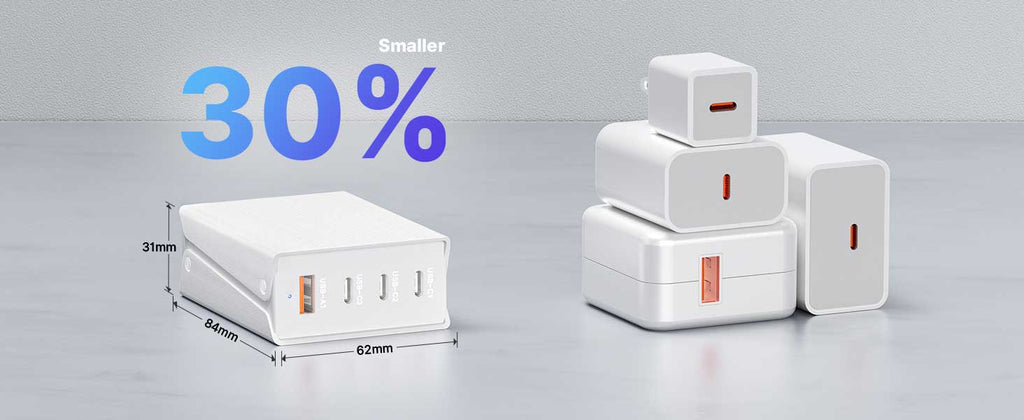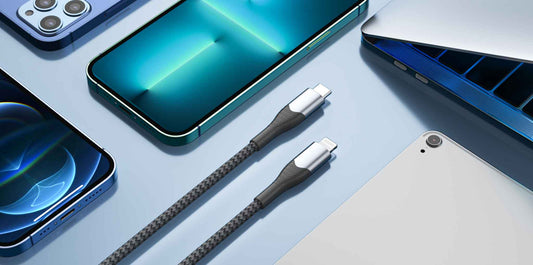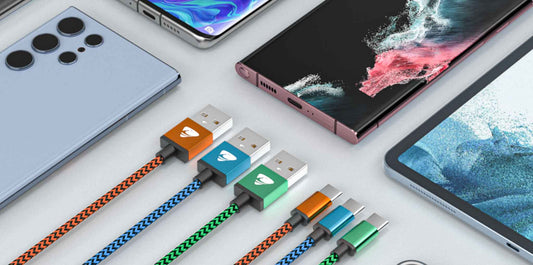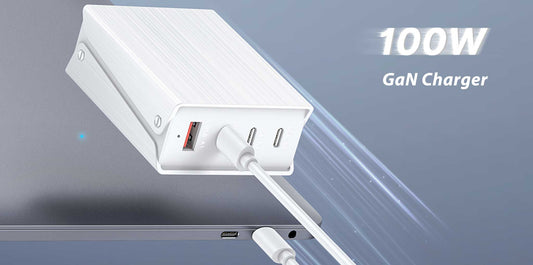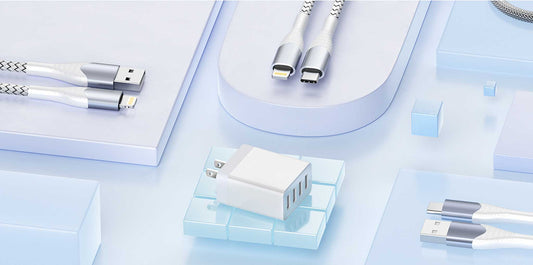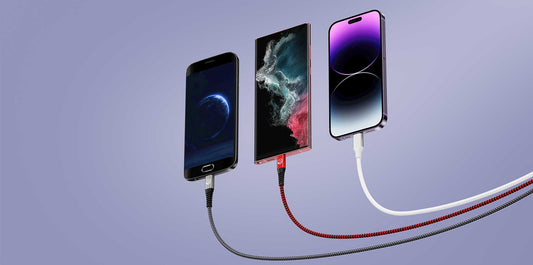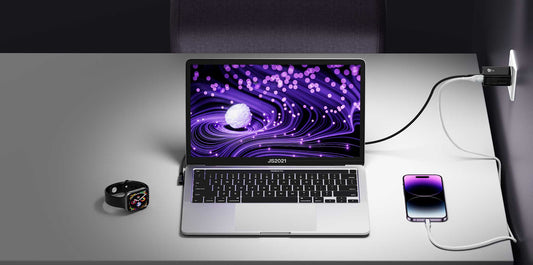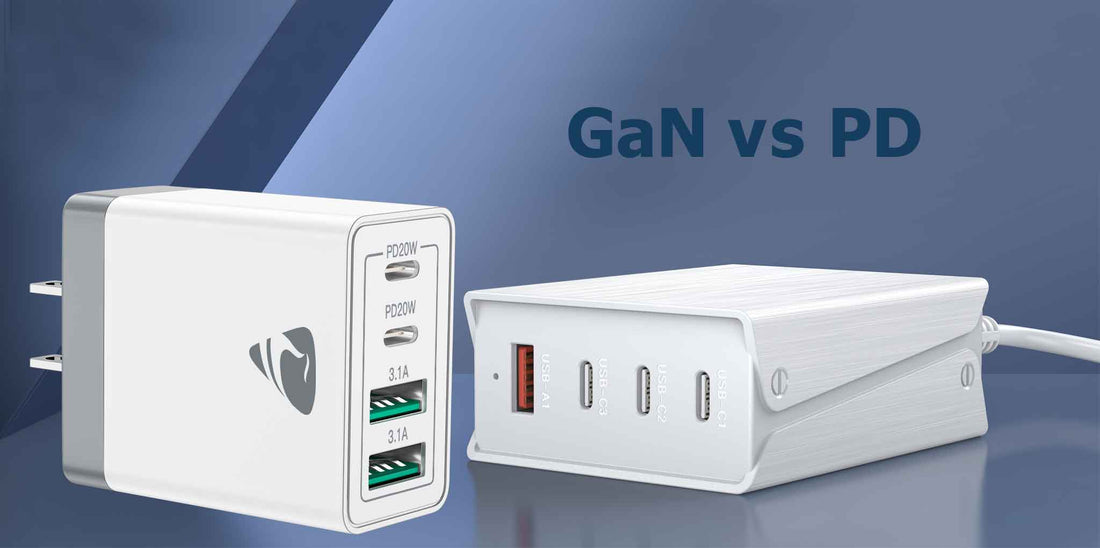
GaN Charger & PD Charger: What’s the Difference?
In today’s world, smartphones and other mobile devices have become an essential part of our daily lives. We rely heavily on these devices to stay connected with our loved ones, complete our work tasks, and enjoy entertainment on the go. However, these devices are only as good as their battery life, and we find ourselves in need of charging them frequently. This is where the importance of a good charger comes in. There are various types of chargers available in the market, including GaN Chargers and PD Chargers. What’s their difference?
To start with, GaN stands for Gallium Nitride, which is a type of material used to make power electronics. GaN chargers use this material to increase the efficiency of the charger and reduce the size and weight of the charger. PD stands for Power Delivery, which is a technology that allows devices to be charged at a higher wattage, allowing for faster charging times.
One of the main differences between GaN chargers and PD chargers is their charging speed. GaN chargers are known for their fast-charging capabilities and can charge devices up to 3 times faster than traditional chargers. This is because GaN chargers have a higher power density, which allows them to provide more power to the device being charged. PD chargers, on the other hand, use the Power Delivery technology to provide fast charging. They can charge devices up to 4 times faster than traditional chargers, but they are not as fast as GaN chargers.
Another difference between the two types of chargers is their size and weight. GaN chargers are smaller and lighter than PD chargers. This is because of the material used in GaN chargers, which is lighter and more efficient than the materials used in traditional chargers. PD chargers are still relatively compact, but they are slightly larger and heavier than GaN chargers.
In terms of compatibility, both GaN chargers and PD chargers are compatible with a wide range of devices, including smartphones, laptops, tablets, and more. However, PD chargers are more commonly used with USB-C devices, while GaN chargers are compatible with both USB-C and USB-A devices.
What is a GaN Charger?
1. Definition of a GaN charger:
A GaN charger is a type of charger that uses Gallium Nitride (GaN) semiconductors in its power conversion process. It is an alternative to the traditional silicon-based chargers that are commonly used today. GaN chargers are becoming increasingly popular due to their high efficiency, compact size, and fast charging capabilities.
2. How it works:
GaN chargers use GaN semiconductors instead of traditional silicon semiconductors in the power conversion process. GaN semiconductors have several advantages over silicon, including faster switching speeds and higher breakdown voltage. This means that GaN chargers can operate at higher frequencies, resulting in smaller and more efficient chargers.
When an AC power source is connected to a GaN charger, it is first converted to DC power by a rectifier. The DC power is then converted to a high-frequency AC signal by a high-frequency inverter that uses GaN semiconductors. The high-frequency AC signal is then transformed to a lower voltage level and rectified back to DC power by a transformer and rectifier circuit. The final DC output voltage is then smoothed by a filter capacitor before being supplied to the device being charged.
3.Advantages of a GaN charger:
Higher efficiency: GaN chargers can convert AC power to DC power with higher efficiency than silicon-based chargers. This means that they waste less energy as heat, resulting in cooler and more efficient chargers.
Faster charging: Due to their higher efficiency and faster switching speeds, GaN chargers can charge devices faster than traditional chargers.
Smaller size: GaN chargers can operate at higher frequencies, allowing for smaller and more compact chargers.
Lower heat dissipation: GaN chargers generate less heat than traditional chargers, which reduces the need for heat sinks and fans, resulting in smaller and more compact chargers.
Lower electromagnetic interference (EMI): Due to their high-frequency operation, GaN chargers generate less electromagnetic interference than traditional chargers, resulting in less interference with other electronic devices.
Recommend GaN Chargers
Aioneus 168W GaN 6 Ports Fast Charger Plug: The Aioneus GaN Charger Line uses GaN technology that allows for smaller, lighter and more efficient charger production than silicon-based chargers. These chargers generate less heat, which makes them safe and durable electronic accessories. They are small, compact, and portable, so they are easy to carry around in a back pack.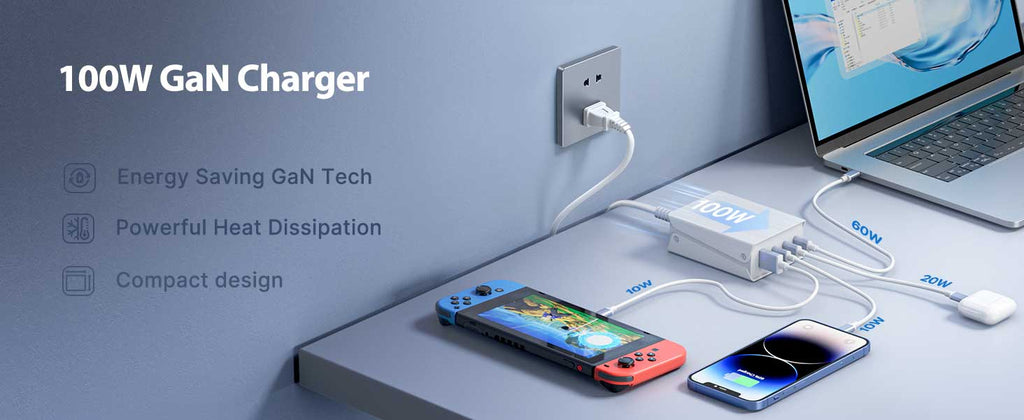
Key Features:
Support max 100w output per USB C Port and max 100W total output.
Multiple ports support, including USB-C and USB-A ports
Multiple device compatibility
Equipped with safety features like over-voltage, over-current, and short-circuit protection
Highly energy efficient
Budget-friendly affordable chargers
What is a PD Charger?
1. Definition of a PD charger
A PD (Power Delivery) charger is a type of charger that provides high-speed charging for electronic devices, including smartphones, tablets, laptops, and other USB-C enabled devices. It is a newer and more advanced technology compared to standard USB chargers and supports higher power outputs for faster charging.
2. How it works
A PD charger works by communicating with the device it is charging to negotiate the most efficient charging rate. When a device is plugged into a PD charger, it sends a signal to the charger indicating its power requirements. The charger then adjusts its power output to match the device’s requirements, delivering power more efficiently than a standard charger.
PD chargers use USB-C connectors, which have more pins than older USB connectors, allowing for faster data transfer rates and more efficient power delivery. They can also provide higher power outputs, up to 100W, compared to standard USB chargers, which typically provide up to 12W.
3. The advantages of a PD charger include:
Faster charging: PD chargers can deliver more power to a device, allowing for faster charging times. For example, a PD charger can charge a smartphone from 0% to 50% in as little as 30 minutes, compared to several hours with a standard charger.
Universal compatibility: PD chargers are designed to work with a wide range of devices, including smartphones, tablets, laptops, and other USB-C enabled devices. This makes them a versatile charging solution for many different devices.
Energy efficiency: PD chargers are more energy-efficient than standard chargers because they deliver power more efficiently. This can help reduce energy consumption and lower electricity bills.
Convenience: PD chargers are often smaller and more compact than standard chargers, making them easier to carry around and use on the go.
Recommend PD Fast Chargers
Aioneus 40W 4-Port Fast Charging Block PD+QC Wall Plug : It can deliver up to 20W of power output for a single USB-C port. It come with multiple ports, including USB-C and USB-A, to charge multiple devices simultaneously.
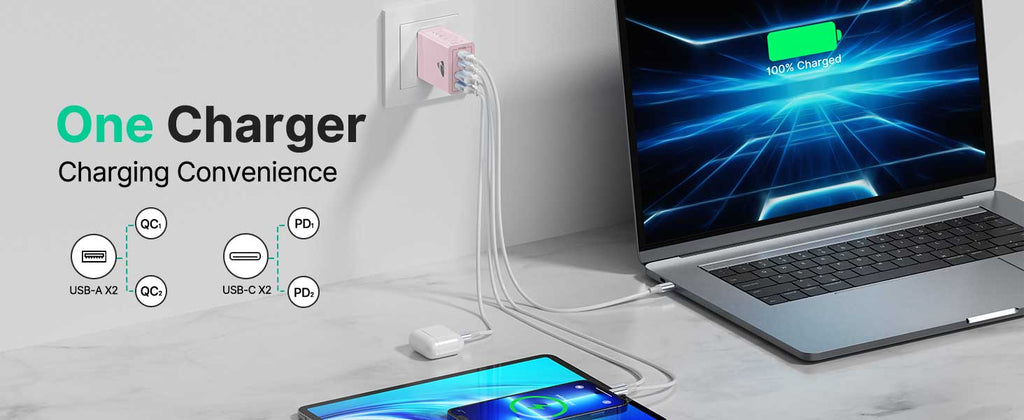
Key Features:
Fast charging technology with a maximum of 20w power output for a single USB-C port
Compatible with Wide range of smartphones and tablets.
Equipped with safety features like over-voltage, over-current and short-circuit protection
Compact and portable design for easy carry around
Final Words
In conclusion, both GaN chargers and PD chargers have their advantages and disadvantages. GaN chargers are known for their fast-charging capabilities and compact size, while PD chargers are known for their compatibility with USB-C devices and Power Delivery technology. Ultimately, the choice between these two types of chargers depends on your individual needs and preferences.

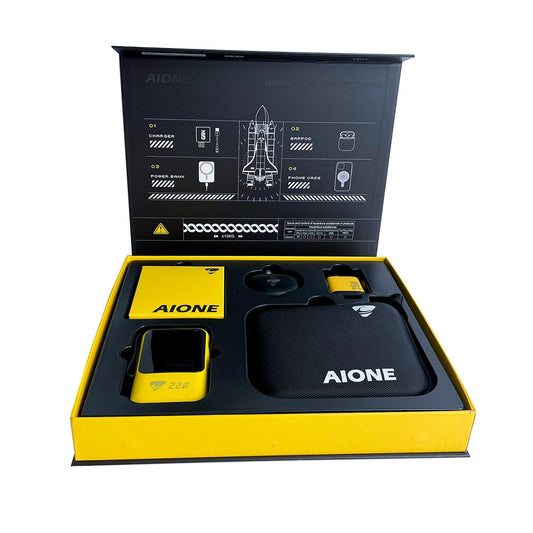
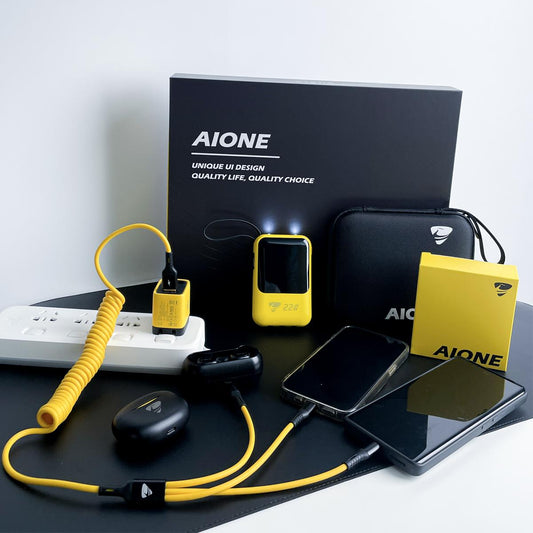
![[MFi Certified] iPhone Fast Charger PD 25W USB C Wall Charger with 3ft Type C to Lightning Cable](http://www.aioneus.com/cdn/shop/files/aioneus-iPhone-Fast-Charger-Block.jpg?v=1701934194&width=533)
![[MFi Certified] iPhone Fast Charger PD 25W USB C Wall Charger with 3ft Type C to Lightning Cable](http://www.aioneus.com/cdn/shop/files/aioneus-iPhone-Fast-Charger.jpg?v=1701934194&width=533)
